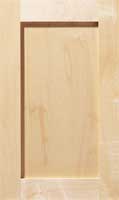Maple
General Info and Benefits
Hard Maple - Acer saccharum
General Description
• Sapwood color ranges from nearly white, to an off-white cream color, sometimes with a reddish or golden hue
• The heartwood tends to be a darker reddish brown
• Unlike other hardwoods, the sapwood lumber is most commonly used rather than its heartwood
Physical Properties
• Janka Rating System = 1450 (higher Janka rating = harder wood)
Where It Grows
• Southern Canada south through Tennessee. From the Great Lakes to the eastern coast.
• Usually grows 80-115 feet tall with a 2-3 foot trunk diameter
Relative Abundance
• A very secure species with no conservation issues
• Readily available in both dimension lumber and veneer
Did You Know?
• The tree of choice for sap from which maple syrup is made
• Quilted and "birdseye” maple, are especially valued
• Used for bowling alleys and bowling pins, basketball courts including the floors used by the NBA, baseball bats (along with white ash), musical instruments, such as the members of the violin family (sides and back) guitars (neck), and drum shells
General Description
• Sapwood color ranges from nearly white, to an off-white cream color, sometimes with a reddish or golden hue
• The heartwood tends to be a darker reddish brown
• Unlike other hardwoods, the sapwood lumber is most commonly used rather than its heartwood
Physical Properties
• Janka Rating System = 1450 (higher Janka rating = harder wood)
Where It Grows
• Southern Canada south through Tennessee. From the Great Lakes to the eastern coast.
• Usually grows 80-115 feet tall with a 2-3 foot trunk diameter
Relative Abundance
• A very secure species with no conservation issues
• Readily available in both dimension lumber and veneer
Did You Know?
• The tree of choice for sap from which maple syrup is made
• Quilted and "birdseye” maple, are especially valued
• Used for bowling alleys and bowling pins, basketball courts including the floors used by the NBA, baseball bats (along with white ash), musical instruments, such as the members of the violin family (sides and back) guitars (neck), and drum shells
-
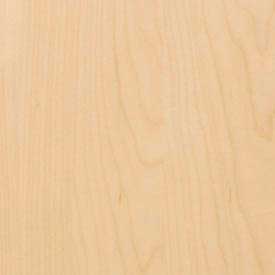 Maple SelectFeaturing the least amount of color and grain variation and natural characteristics, Maple Select displays a lighter color tone and is a great option for a clear or light stain.
Maple SelectFeaturing the least amount of color and grain variation and natural characteristics, Maple Select displays a lighter color tone and is a great option for a clear or light stain. -
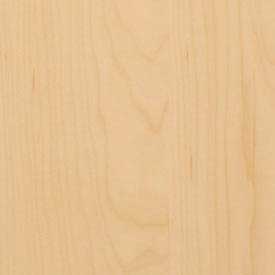 Maple Finish GradeMaple Finish Grade is designed to be used when having your products finished by Decore-ative Specialties. With Finish Grade materials you will receive the material option that best suits the look you have selected, whether you choose a clear or stain finish. As a result, the amount of natural color or grain may vary depending on the selected finish.
Maple Finish GradeMaple Finish Grade is designed to be used when having your products finished by Decore-ative Specialties. With Finish Grade materials you will receive the material option that best suits the look you have selected, whether you choose a clear or stain finish. As a result, the amount of natural color or grain may vary depending on the selected finish. -
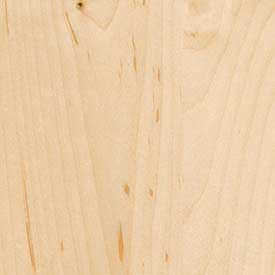 Maple NaturalMaple Natural offers a light color tone, with an allowance for mineral streaks, worm tracks and varying amount of heartwood and sapwood on the face. In addition to this, it has an allowance for small closed knots or pin knots.
Maple NaturalMaple Natural offers a light color tone, with an allowance for mineral streaks, worm tracks and varying amount of heartwood and sapwood on the face. In addition to this, it has an allowance for small closed knots or pin knots. -
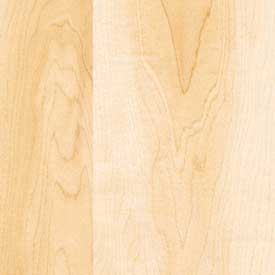 Maple Paint GradeMaple Paint Grade allows for color and grain variation along with other natural characteristics, with the additional allowance for putty on the face of the door. This material is highly popular for painted finishes on solid wood doors.
Maple Paint GradeMaple Paint Grade allows for color and grain variation along with other natural characteristics, with the additional allowance for putty on the face of the door. This material is highly popular for painted finishes on solid wood doors. -
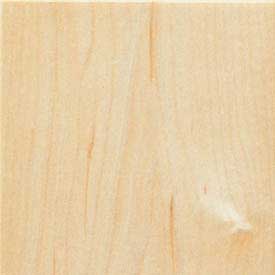 MapleOffered in many of our components, moldings, accessories, and drawer boxes, Maple allows for some natural characteristics and variations in color.
MapleOffered in many of our components, moldings, accessories, and drawer boxes, Maple allows for some natural characteristics and variations in color. -
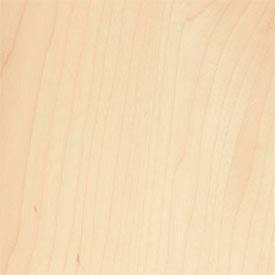 Maple PreferredWhen used on Drawer Boxes, Maple Preferred is similar in some ways to Maple Select. It features a minimal amount of color and grain variation, with few natural characteristics like pin knots or mineral streaks.
Maple PreferredWhen used on Drawer Boxes, Maple Preferred is similar in some ways to Maple Select. It features a minimal amount of color and grain variation, with few natural characteristics like pin knots or mineral streaks. -
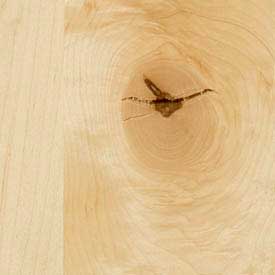 Maple Rustic KnottyMaple Rustic Knotty displays a lighter color tone, with an allowance for larger-sized open knots, knots with cracks, clusters of pin knots, color and grain variation, mineral streaking and worm tracks.
Maple Rustic KnottyMaple Rustic Knotty displays a lighter color tone, with an allowance for larger-sized open knots, knots with cracks, clusters of pin knots, color and grain variation, mineral streaking and worm tracks. -
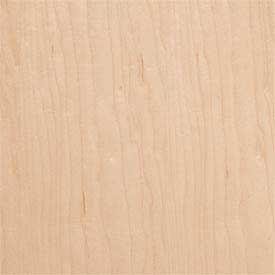 Plain Sliced Select MapleUsed for Veneer Doors, Plain Sliced Select Maple will display an even, consistent light color and grain pattern. It will also have a reduced allowance for knots and other defects on the face.
Plain Sliced Select MapleUsed for Veneer Doors, Plain Sliced Select Maple will display an even, consistent light color and grain pattern. It will also have a reduced allowance for knots and other defects on the face. -
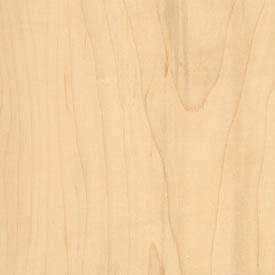 Maple Natural Cabinet GradeMaple Natural Cabinet Grade offers similar color and grain characteristics as seen in Maple Natural, however this material is usually offered with more natural defects than a Select or Natural Grade. The Cabinet Grade typically is used to offer a more economical price for the lower grade face and back. Due to the higher allowance for natural characteristics this material is not recommended for clear finishes or use on End Panels.
Maple Natural Cabinet GradeMaple Natural Cabinet Grade offers similar color and grain characteristics as seen in Maple Natural, however this material is usually offered with more natural defects than a Select or Natural Grade. The Cabinet Grade typically is used to offer a more economical price for the lower grade face and back. Due to the higher allowance for natural characteristics this material is not recommended for clear finishes or use on End Panels. -
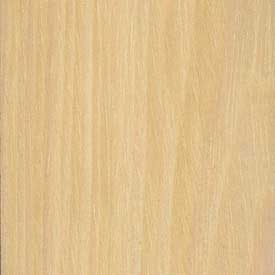 Maple Veneer / MDFMaple Unfinished Veneer on a MDF core will display a fairly consistent color and grain pattern.
Maple Veneer / MDFMaple Unfinished Veneer on a MDF core will display a fairly consistent color and grain pattern.
